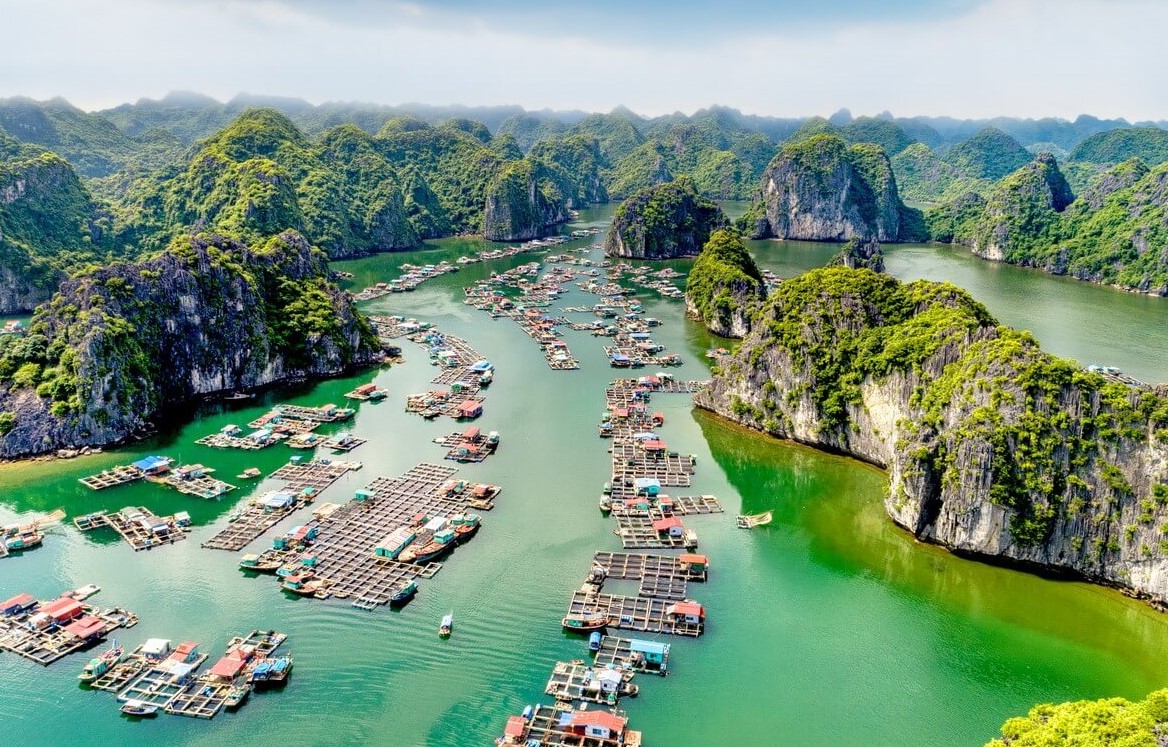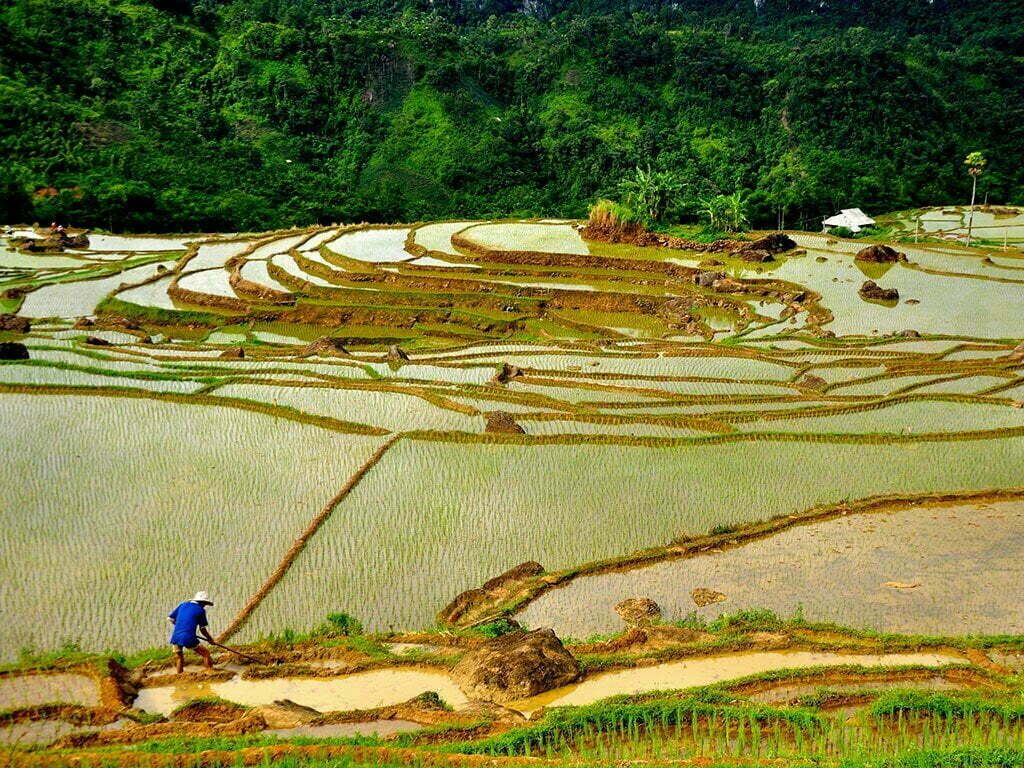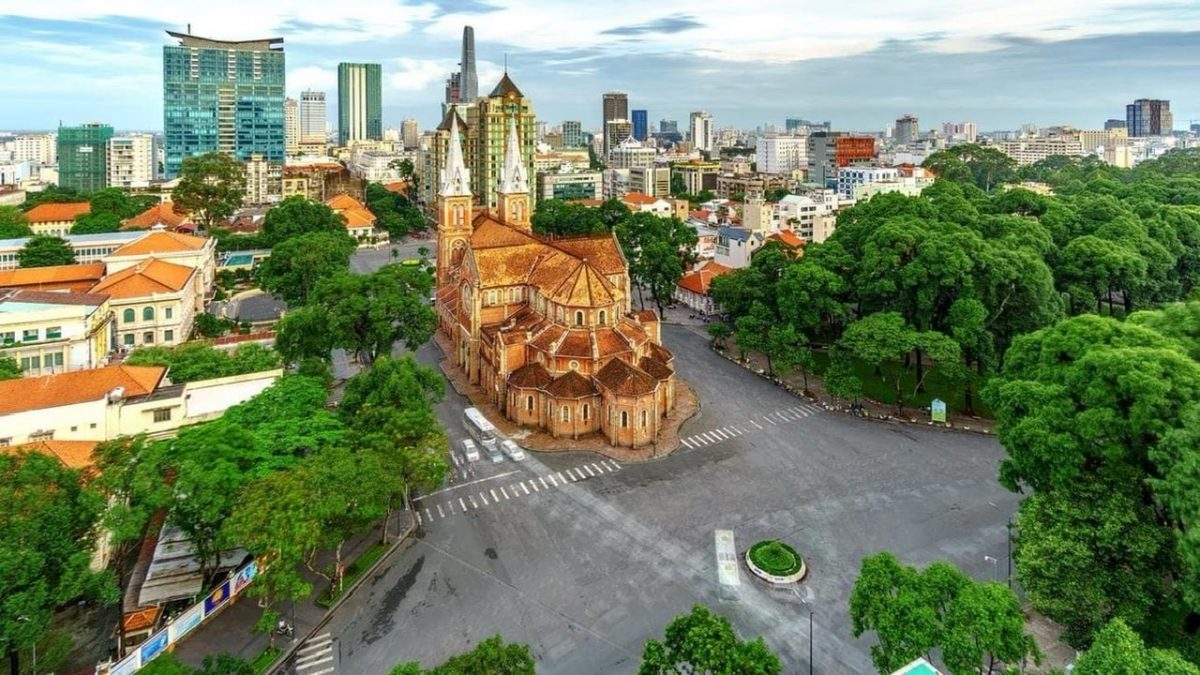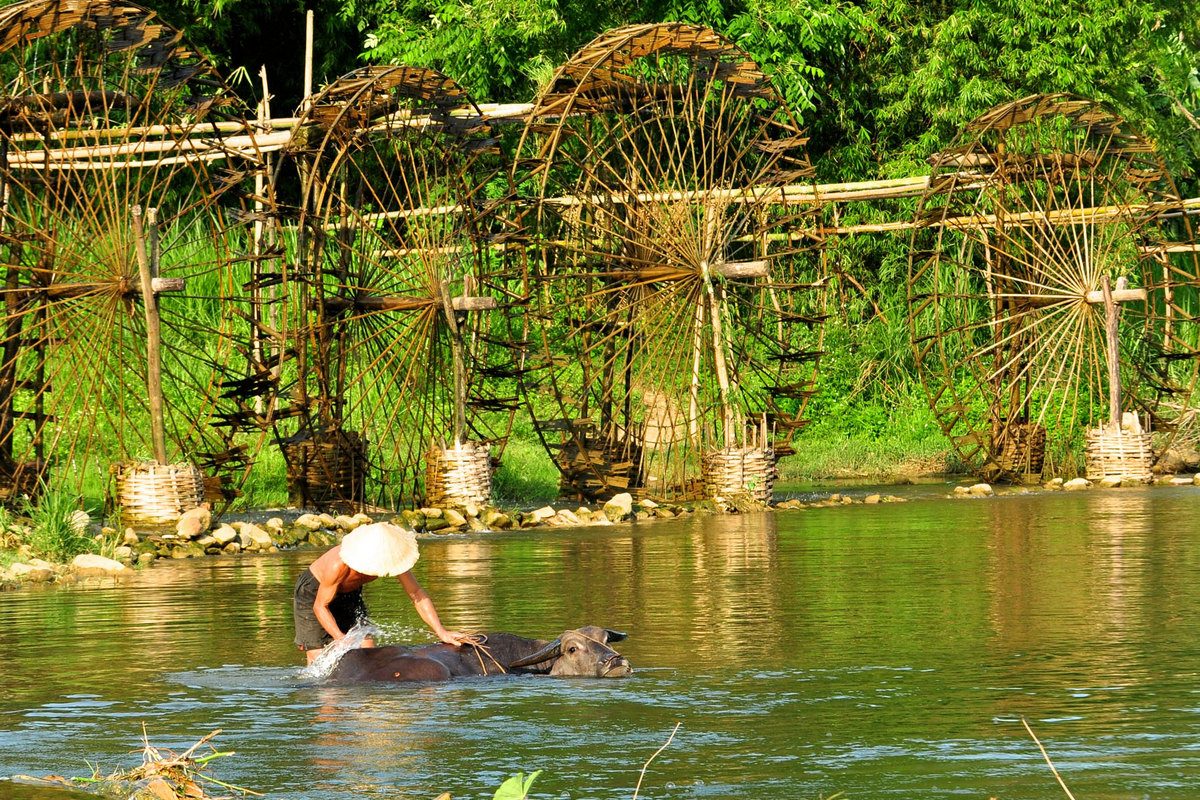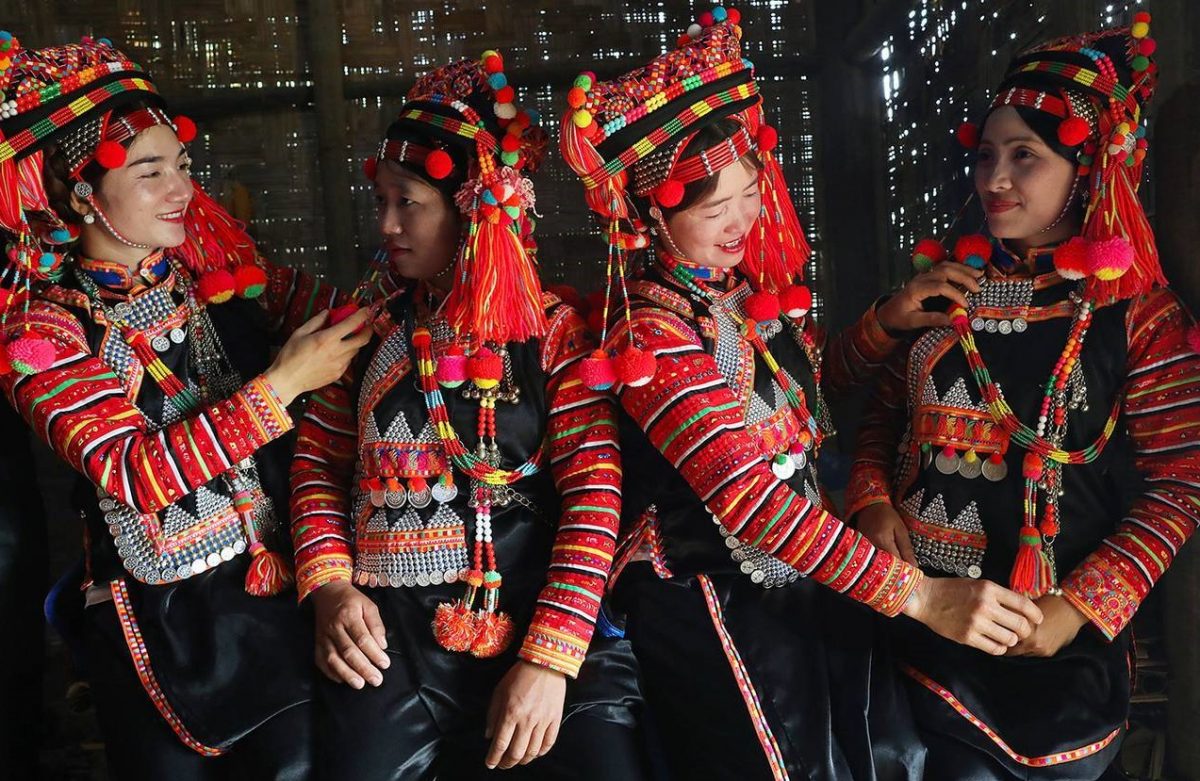Laos People’s Democratic Republic (PDR)
Population: 6.5 million
Capital City: Vientiane (Pop: 750,000)
People: Over 48 ethnic groups
Language: Lao
Currency: Kip (KIP)
Time Zone: GMT +7 Hours
International Dialing Code: +856
HISTORY
The earliest Lao legal document (and the earliest sociological evidence about the existence of the Lao people) is known as “the laws of Khun Borom” (also spelled “Khun Bulom”), still preserved in manuscript form.
This set of memorizer laws is written in a type of indigenous blank verse, and reflects the state of proto-Lao society as early as the 9th century, possibly prior to their adoption of Theravada Buddhism, and prior to (or coeval with) their southward migration into the territory now comprising modern Laos (from North-Western Vietnam).
While most Lao people regard Borom/Bulom as a subject of myth only, Western scholars regard him as an historical figure, albeit there is very little factually known about him aside from the fact of his bare existence and the description of a very primitive kingdom in his laws.
In general terms, these ancient laws describe an agrarian society in which life revolves around subsistence agriculture with domesticated water-buffaloes. The strict punishments set down for stealing or killing a neighbor’s elephant reflect that these were (evidently) an expensive and important possession of the time.
The official History of Laos as introduced in government textbooks is conventionally traced to the establishment of the kingdom of Lan Xang by Fa Ngum in 1353. This is a relatively conservative date to begin the history of the nation, providing a contrast to the course taken by Thai historiography (which reaches back implausibly far into proto-history). By the 14th century, when this “official history” begins, the speakers of early Lao-related languages (“Tai-Kadai”) had probably developed a reasonable base of population among the prior inhabitants of (what is now) Laos over the prior century or two.
The earlier inhabitation of the land by peoples such as the Mon kingdom of Dvaravati and Proto-Khmer peoples was given a great deal of emphasis in the histories of Laos written during the French colonial period. However, post-colonial historiography has instead sought to represent all peoples of Laos as equally “indigenous”, relating the early history in terms of a complex interaction with the (admittedly more ancient) Cambodian kingdoms to the south, and praising the Proto-Khmer as Lao nationalists for their heroism and modern struggles against the French and Americans (see, e.g., the Ong Keo Rebellion starting circa 1902).
Both French colonial history and post-colonial (Communist) history sought to reverse the obvious racism of earlier, popular accounts that when the Lao migrated into the country, they simply conquered and enslaved the native inhabitants (viz., primarily Proto-Khmer people, described in such a context with the derogatory term “Kha-That”). This traditional view has almost no factual basis, but remains a commonly heard pseudo-history, and a special concern for teachers to address (or redress) in the classroom. Vatthana Pholsena provides a survey of the historiography on this point in Post-War Laos, 2006, Silkworm Books.
It is generally assumed that, as late as the 16th century, King Photisarath helped establish Theravada Buddhism as the predominant religion of the country. However, this aspect of official history may now have to change given recent archaeological discoveries in Cambodia and Vietnam, showing intact Pali inscriptions as early as the 9th century. (See: JPTS, Vol. XXIII, 1997: Peter Skilling, “New Paali Inscriptions from Southeast Asia”)
While there can be no doubt that animism and fragments of Shiva-worship were popular in ancient Laos, evidence increasingly indicates a long, gradual process leading to the ascendancy of Buddhism (rather than a single king converting the country). The reverse also did occur, as with the historical layers of statuary and inscriptions at Wat Phu Champassak; the oldest are in Sanskrit, and worship Shiva, while the later evidence is Buddhist, subsequently reverting to animism (with the most recent statues simply depicting giant elephants and lizards, with no references to the organized religions of India, and neither Sanskrit nor Pali text).
It is significant to note that all of these official histories exclude the (possible and actual) influence of Chinese religion in the region. In fact, the ancient Lao calendar and Thai calendar are both of Chinese origin (adapted from the “Heavenly Stem Branch Calendar”), and do not reflect Indian cosmology. These calendars were both part of the royal religion (preserved in epigraphy) and, apparently, part of popular religion (fortune telling) for centuries.
Laos is a laid-back landlocked country of spectacular natural beauty and strong spiritual traditions. With roughly six million people, it is one of the least populated countries in the world. It is also the least developed and most enigmatic of the three former French Indochinese states. Dominated by majestic mountains, verdant valleys and broad snaking rivers, the country is perfect for nature lovers and those seeking adventure. Vientiane is probably the most relaxed capital city in the world, where travellers get a real insight into tranquil riverside life.
CULTURAL DIVERSITY
The population is ethnically diverse, but a complete classification of all ethnic groups has never been undertaken. Before the Indochina wars, sources commonly identified more than sixty different groups, whereas the 1985 census listed forty-seven groups, some with populations of only a few hundred persons. Discrepancies in the number of groups resulted from inconsistent definitions of what constitutes an ethnic group as opposed to a subgroup, as well as incomplete knowledge about the groups themselves. The 1985 census distinguished three general ethnic group classifications reflecting common origin and language grouping and noted significant differences among the groups comprising the three families. Because detailed ethnographic information about many groups is lacking–especially for the midland groups–and because the sheer number of ethnicities represented in Laos is so great, the discussion of ethnic groups concentrates on one or two representative examples of each of the three larger groupings; other groups may differ on a number of points.
The Lao Loum, or lowland Lao, constitute the majority of the population–66 percent–and comprise several ethnic groups that began to move from the north into the Southeast Asian peninsula about 1,000 years ago. All Lao Loum speak languages of the Tai-Kadai family–for example Lao, Lue, Tai Dam (Black Tai), and Tai Deng (Red Tai). Lao Loum prefers to live in lowland valley areas and base agricultural production on paddy rice.
The Lao Theung, or midland Lao, are of Austro-Asiatic origin and are probably the autochthonous inhabitants of Laos, having migrated northward in prehistoric times. Originally paddy rice farmers, they were displaced into the uplands by the migrations of the Lao Loum and in 1993 accounted for about 24 percent of the national population. The cultural and linguistic differences among the many Lao Theung groups are greater than those among the Lao Loum or Lao Sung, or upland Lao. Groups range from the Kammu (alternate spellings include Khamu and Khmu) and Lamet in the north, to the Katang and Makong in the center, to the Loven and Lawae in the far south.
The Lao Sung makes up about 10 percent of the population. These groups are Miao-Yao or Tibeto-Burmese speaking peoples who have continued to migrate into Laos from the north within the last two centuries. In Laos most highland groups live on the tops or upper slopes of the northern mountains, where they grow rice and corn in swidden fields. Some of these villages have been resettled in lowland sites since the 1970s. The Hmong are the most numerous Lao Sung group, with villages spread across the uplands of all the Northern provinces. Mien (Yao), Akha, Lahu, and other related groups are considerably smaller in numbers and tend to be located in rather limited areas of the north.
Government policy emphasizes the multiethnic nature of the nation and in many ways works to reduce the discrimination against midland and upland minorities by some lowland Lao. Use of the three general ethnic group classifications emphasizes the commonality of Lao nationality but obscures significant differences among the smaller groups. Most Laotians categorize ethnic groups in terms of these three broad categories, and villagers themselves, when asked their ethnicity by outsiders, are likely to respond Lao Loum, Lao Theung, or Lao Sung, rather than their specific ethnicity.
Although ethnic differences are seldom a direct source of conflict, historical patterns of exploitation and competition for natural resources have led to tensions and occasional overt conflicts, some of which persisted in the early 1990s. For example, lowland Tai-Lao migrants displaced the Lao Theung groups into the uplands beginning a millennium ago, dominated them politically, and exploited them as well. The Lao Theung was frequently referred to as “Kha,” a derogatory term meaning slave, which reflected their social, if not necessarily legal, status. (Slave trade did exist in the south of Laos during the eighteenth and nineteenth centuries, usually involving the Lao Theung.) Rites surrounding the coronation of the Lao king in Luang Prabang, as well as annual ceremonies of renewal, include rituals in which the king makes symbolic payment to Lao Theung representatives for the land, and they in turn acknowledge the legitimacy of the king.
French colonial rule tended to strengthen the position of lowland Lao, both by granting them access to education and by commonly appointing them as district and provincial governors regardless of the ethnic makeup of a region. In the early 1900s, Lao Theung and Lao Sung groups carried out several rebellions against Lao-Thai as well as French authority but all were eventually suppressed, leaving unresolved tensions. The court, administration, and national symbols continued to be defined in terms of Tai-Lao cultural traditions. During the 1950s, significant numbers of Lao Theung and Lao Sung were recruited by the leftist Pathet Lao (Lao Nation) and these groups played an important role in the military struggle. Since 1975 the numbers of Lao Theung and Lao Sung in the national and provincial administrations have increased, although in 1993 they were still underrepresented.
National borders have not created significant barriers to the movement and settlement patterns of the different Lao ethnic groups because Laotian villagers have traditionally moved in search of better land for rice farming. About 5 million Hmong lived in southern China in the early 1990s, as opposed to about 200,000 in Vietnam, a similar number in Laos, and about 90,000 in northern Thailand. Kammu settlements existed both in northern Laos and northern Thailand, and many of the midland groups in the center of the country had villages in both Laos and Vietnam. The lowland Lao historically lived on both sides of the Mekong, with early Lao kingdoms encompassing much of the Khorat Plateau in present-day Thailand. Cultural and linguistic differences between the Lao Loum and the Thai Isan–what the Thai call the inhabitants of the Khorat Plateau in northeast Thailand–were primarily due to the expansion of the Thai state and influence in that region since 1945. Significant political changes in Laos since 1975 also contributed to a growing cultural distance.
GENERAL INFORMATION
PASSPORT & VISA
Passports should be valid for six months from the date of entry into Laos. We recommend you make a photocopy of your passport and keep it somewhere separate, or scan it and keep it in an accessible email account.
Visas valid for 30 days can be easily obtained on arrival. Cost depends on nationality (from US$30 to US$42). One passport-sized photograph is required.
WEATHER
Laos has a tropical monsoon climate with two distinct seasons: May to October is the rainy season and November to April is the dry season.
It is hottest in March and April when temperatures can reach as high as 38C/100F. The lowest temperatures, usually in December, are around 15C/59F. The average temperature is between 25C/77F and 30C/84F.
Please note: The weather can be unpredictable so it may be a good idea to carry an umbrella or raincoat with you. You can purchase these from most supermarkets and general stores.
CLOTHING
Comfortable lightweight clothing in natural fabrics such as cotton is most suitable for travelling in Laos. The dress code is fairly casual as in most parts of the tropics but it is advisable to cover arms and legs in the evenings against biting insects. A lightweight raincoat is a good idea in the rainy season. During the winter months warm clothing is needed for visiting the north of Laos. Visitors to Buddhist countries should not wear shorts, short skirts or other skimpy clothing when religious buildings and shoes should be removed before entering a private home.
CURRENCY
The Kip is the currency unit of Laos. Us Dollars and Thai Baht are also accepted in the many places and are certainly more convenient to carry than great wads of the local currency. Banks are open Monday to Friday from 08:00 to 12:00 and 14:00 to 15:00. Traveller cheques can be exchanged at banks and some hotels in the major cities. Visa Card and MasterCard are now accepted at the larger hotels in Vientiane and Luang Prabang. 24-hour ATMs are found in main towns such as Luang Prabang, Vientiane, Xiengkhouang, Savannakhet and Pakse.
PHONES & INTERNET SERVICES
Postal service sare available in Laos. The best way to receive any mail is to get it sent to a post office and collect it yourself.
Telephone connections to the rest of the world are widely available, however they aren’t cheap.
Internet access is available in most major tourist places such as hotels, restaurants and cafes.
TRAFFIC & TRANSPORTATION
The transport network in Laos is slow, but comprehensive. Getting around takes time, sometimes longer than you may think, but this is all part of the fun of travelling in this laid-back country.
Taxis and tuk-tuks
This is by far the easiest way to get around towns and cities, and negotiating the price is the norm.
Motorbike taxis and rental: Travel by motorbike in Laos is not safe and under no circumstances is this sanctioned. Please note that travel by motorbike is not usually covered by travel insurance. Please check the fine print of your travel insurance policy to be sure of your cover.
LUGGAGE ALLOWANCE
Laos Airlines: 20kg-30kg depending on route and class of travel. The domestic maximum is 20kg in Economy and 30kg in Business Class. Business Class passengers may take two carry-on bags, while Economy Class passengers may only carry one. Carry-on bags must weigh less than 7 kg and have a size limit of 9 x 14 x 22 inches.
SAFETY TIPS
In general, Laos is very safe for travelers. Violent attacks are rare, although theft is a problem. When possible, secure your valuables in the hotel safe. Remember to record your traveler’s cheque numbers and credit card info—just in case.
Do not leave your wallet or mobile phone in the back pocket of your pants or anywhere else that’s easily reached (like an outer zip-up compartment on a backpack). Be especially vigilant in markets and other crowded places like ports and train stations.
You’re always better off skipping cyclos or motorbike taxis at night; ask your hotel or restaurant to call a reputable taxi firm. Always ask your local guide for his/her mobile phone number, you may need to contact them in scase of emergency.
HEALTHY
Health and well-being
Please be aware that your health can be at risk in Laos due to poor sanitation and lack of effective medical facilities. Rural areas may not have pharmacies and hospitals so make sure you travel with a full supply of any prescribed medicine you take. Every traveller is responsible for his or her own health. First and foremost, make sure that you have travel insurance for your trip. You should also consult your doctor or local travel clinic for the latest information and advice on travelling to Laos before departure.
If you have a medical condition or allergy which requires particular attention, please carry a doctor’s letter with you that describes the nature of the condition and treatment needed. We also recommend you pack a medical kit, including paracetamol and a diarrhoea remedy.
VACCINE
There are many vaccinations needed when travelling to this part of the world. It is important you ensure you have adequate protection against disease. Book an appointment with your doctor or travel clinic, no less than two months before your departure.
TRAVEL INSURANCE (recommended)
The Time Journeys does everything possible to ensure a safe and enjoyable trip. However, travel inevitably involves some unavoidable risk. Travel insurance is a cost effective way of protecting yourself and your equipment should any problems occur such as cancelled trips, delays, medical emergencies, baggage loss or damage. Please also make sure your travel insurance covers all activities planned on your trip so you can enjoy peace of mind during your journey.
PUBLIC HOLIDAYS
Laos New Year is the main public holiday, which is celebrated on the 14th, 15th and 16th April. Not unlike Songkran, the Laos Pee Mai celebration mixes religious tradition with water. Here, water is used more for bathing Buddha images in temples than for dousing foreign tourists. However, water fights are catching on, so be aware when travelling during this period.

